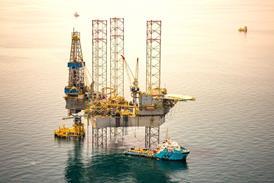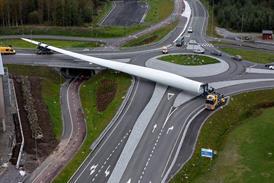Developments over the last 12 months suggest that the development of tidal, wave and other ocean power technologies is gathering traction, writes Phil Hastings.

According to the International Energy Agency (IEA), there are currently five ocean energy technologies under development - tidal power, tidal (marine) currents, wave power, temperature gradients and salinity gradients.
Right now, however, none of those technologies are widely deployed and the majority of projects remain at the demonstration phase. “The engineering challenges associated with efficiently intercepting energy from wave or tidal power are significant, particularly given the need to survive and operate in difficult conditions,” said the IEA. However: “With large, well-distributed resources, ocean energy has the potential to scale up over the long term.”
Recent illustrations of that potential included news at the end of 2018 of enhancements to the 6 MW-rated MeyGen tidal stream array in Scotland – said to be currently the largest system of its type in operation worldwide.
Operator Simec Atlantis Energy reported that it was progressing with “all requisite technical and environmental studies” to achieve the first power generation from that site through a new subsea connection hub in late 2019, subject to consent and funding.
Looking further afield, Tim Cornelius, Simec Atlantis Energy’s ceo, said that the development of turbines with larger rotors, along with subsea connection hubs, will open up new markets for the technology in places like France, South Korea, Japan and the Channel Islands.
At the end of May, marine energy technology developer Minesto said that the Welsh government had awarded EUR14.9 million (USD17 million) of EU funding for the next phase of its Holyhead Deep tidal energy project off the coast of Anglesey, north Wales.
Planned developments supported by that investment, stated Minesto, include securing permits and consents for expansion of the site towards becoming a commercial 80 MW tidal energy farm, plus the design of related subsea infrastructure.
To date, few logistics service providers have had much involvement in tidal or wave energy projects. However, many are monitoring developments to see what new business opportunities will emerge.
One company that has already had some involvement is Blue Water Shipping (BWS). “We have been active in connection with tidal turbines in France over the past few years and we are also closely following the development of that technology in the USA,” said Peter Ehrhorn, the company’s global director – wind, chartering and special projects.
Gaining favour
Another is GAC UK. “We have delivered marine solutions to contractors involved in tidal and wave projects and I am sure both areas will continue to grow and gain favour worldwide, just as offshore wind has,” commented Adrian Henry, the company’s oil, gas and renewables manager.
Francisco Rodrigues, business development offshore renewables for ALE, was also positive about tidal’s potential. “With some tidal and wave projects now developing into commercial and industrial scale installations, for example MeyGen, there will be a requirement for smart heavy lift systems to reduce costs and time in the overall lifecycle,” he stated.
Asked to quantify the global prospects for logistics work relating to ocean tidal and wave power projects over the next couple of decades, Rodrigues suggested those would depend on how the technology develops and the results of the first prototypes.
“However, if you look at the example of offshore wind and how it grew in one decade, then I would say the prospects are quite interesting,” he concluded.
This article is taken from HLPFI’s July/August 2019 edition.
















